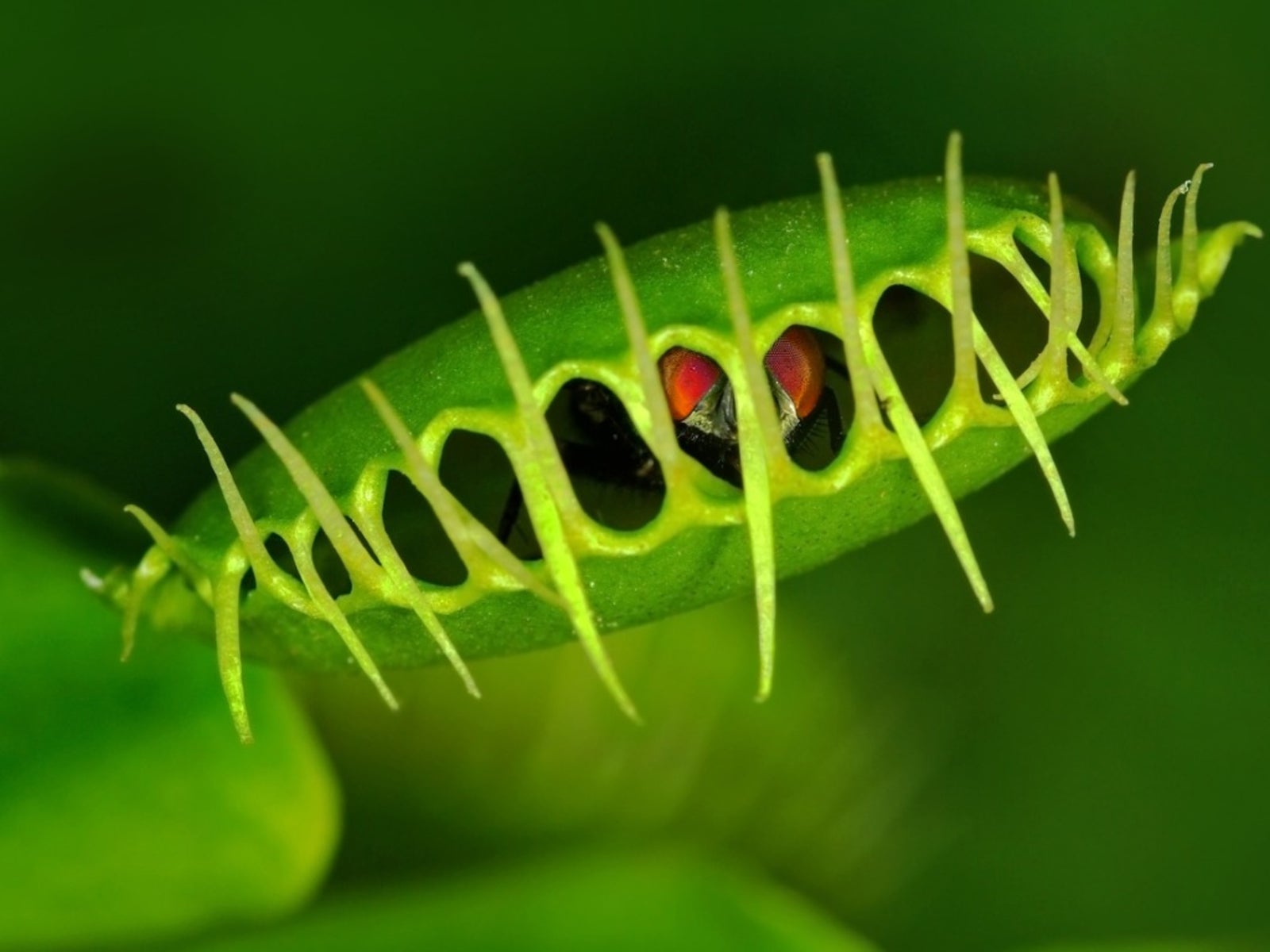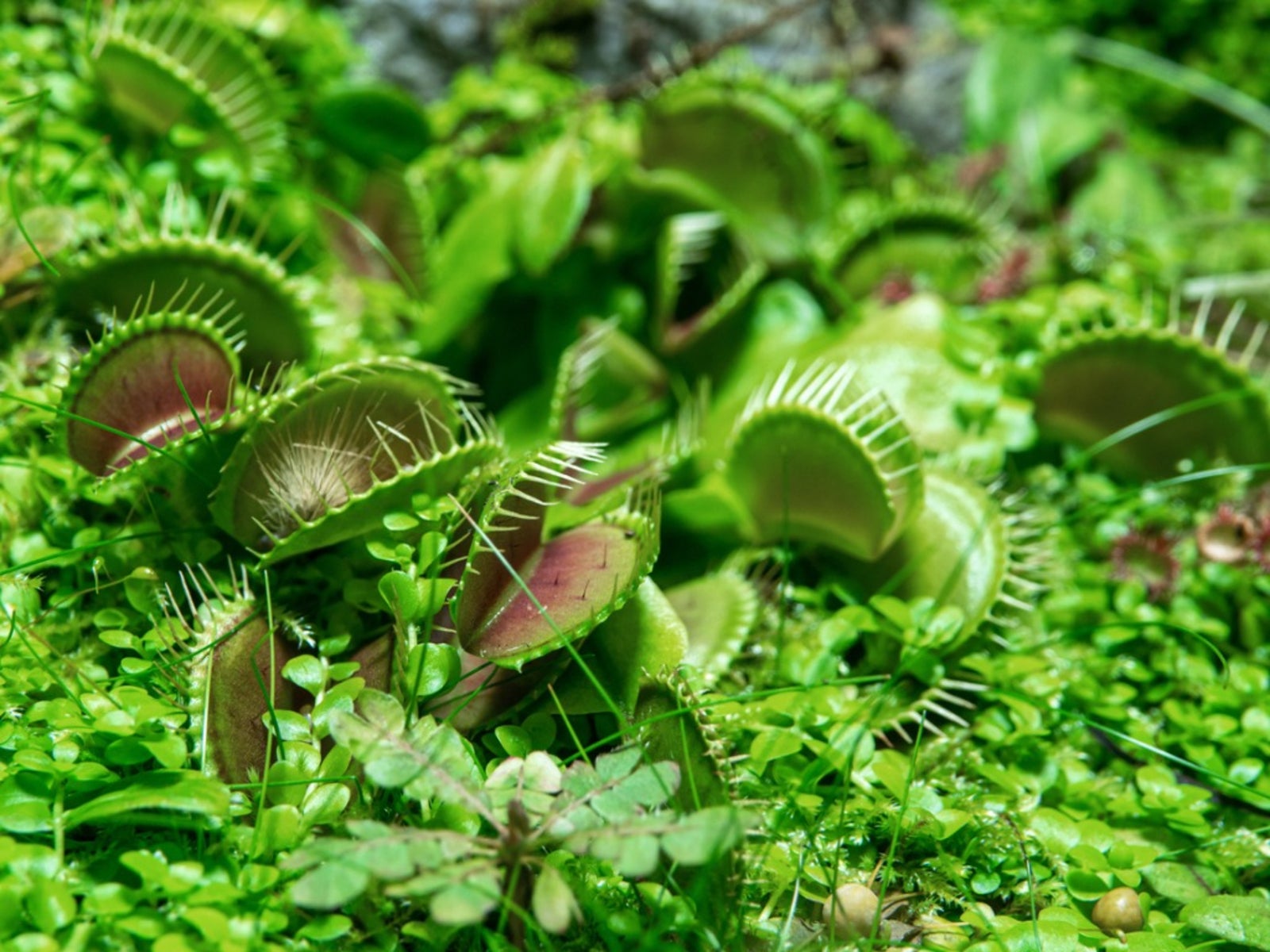Growing Carnivorous Plants: Learn About Various Types Of Carnivorous Plants


Growing carnivorous plants is a fun project for the family. These unique plants provide insect control and a riot of forms, colors and textures to the home garden. Carnivorous plant habitats are primarily temperate to warm, moist and nutrient-deficient. This is why all types of carnivorous plants must supplement their nutrient intake with insects, or even small animals and amphibians. Gather some information on what are carnivorous plants' needs and get started on raising an interesting form of life.
What are Carnivorous Plants?
The vast array of forms in the carnivorous plant family is far too numerous to detail entirely in a list of carnivorous plants, and their predatory methods range the limits of imagination. Their reputation as man eaters is entirely false but some carnivorous plants can catch small mammals and amphibians, such as frogs. The smallest of the group are just an inch (2.5 cm.) high and the largest may get 50 feet (15 m.) long with 12-inch (30 cm.) traps. Sarracenia is a genus of carnivorous plants known to most gardeners as pitcher plants. They are native to North America and may be found growing wild in boggy, warm areas. There are also pitcher plants in the genera Nepenthesand Darlingtonia. Sundews belong in the genus Droseriathat are the type with sticky hairy pads. The Venus flytrap is also a member of the sundew genus. Carnivorous plants grow where soils are low in nitrogen, which is a crucial nutrient for plant vegetative growth. In fact, these plants have evolved various methods for capturing and digesting insects to supplement their nitrogen content.
Types of Carnivorous Plants
There are around 200 different types of carnivorous plants with various methods of trapping their necessary food. A complete list of carnivorous plants would include those that drown, mechanically trap or catch their prey with gluey substance. Carnivorous plants come in many shapes and sizes. Their most defining forms are the methods they employ to catch their prey. Many simply drown the insects in a funnel or vase-shaped organ that has liquid at the bottom, such as with pitcher plants. Others actually have a sensitive motion activated trap. These may be claw shaped, hinged, toothy or leaf like. The snap mechanism is triggered by the insect's movements and closes quickly on the prey. The Venus flytrap is a prime example of this mechanism. Sundews have sticky pads on leaf-like extensions. These are gluey and have a digestive enzyme in the shimmering beads of liquid. Bladderworts are underwater plants that use bloated, hollow leaf tissue with a small opening at one end, to suck in prey and digest them within.
Growing Carnivorous Plants
The most commonly available carnivorous plants for the home gardener are primarily bog plants. They require high humidity and consistent moisture. Carnivorous plants require acidic soils, which are easily provided with sphagnum peat moss in the potting medium. Carnivorous plants do well in a terrarium environment, which helps conserve moisture. They also like bright sunlight, which may come from a window or artificially provided. Carnivorous plant habitats are moderate to warm in temperature. Daytime temperatures around 70-75 F. (21-24 C.), with nighttime temperatures no less than 55 F. (13 C.), provide ideal growing conditions. In addition, you'll need to provide insects for the plants or feed them a on-quarter dilution of fish fertilizer every two weeks during the growing season.
Gardening tips, videos, info and more delivered right to your inbox!
Sign up for the Gardening Know How newsletter today and receive a free copy of our e-book "How to Grow Delicious Tomatoes".

Bonnie Grant is a professional landscaper with a Certification in Urban Gardening. She has been gardening and writing for 15 years. A former professional chef, she has a passion for edible landscaping.
-
 Types Of Tomatoes Explained: Explore The Many Wonderful Shapes, Colors, Flavors, & Best Uses
Types Of Tomatoes Explained: Explore The Many Wonderful Shapes, Colors, Flavors, & Best UsesThe world of tomato varieties is vast and fascinating. Learn about the key types to grow in your garden, tailored to your preferences and space.
By Amy Grant
-
 Try The Trend – Turn Any Bed Into A Keyhole Garden With This Clever In-Ground Composter
Try The Trend – Turn Any Bed Into A Keyhole Garden With This Clever In-Ground ComposterKeyhole gardening is an efficient and sustainable practice that saves space. Get started on this DIY project quickly and easily with an in-ground composter.
By Bonnie L. Grant
